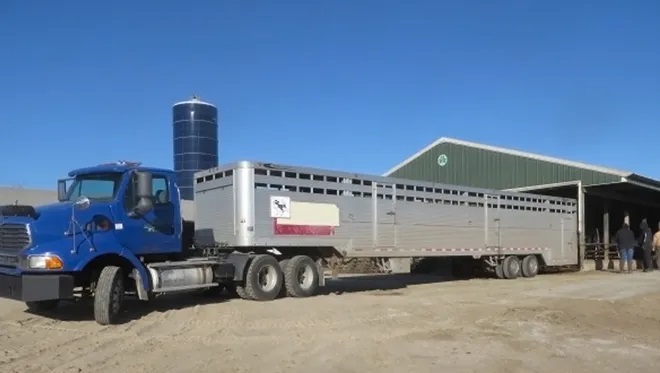
Many of you may have seen Facebook posts about a parlor fire at a Northeast Ohio dairy farm. It was amazing how quickly our community responded to aid in the immediate aftermath.
According to news reports, the fire broke out on the property of the Comp Dairy Farm on Sept. 22 as they were milking some of their 1,100 head of dairy cattle. Seven cows died in the blaze while one barn was destroyed and three others were damaged.
I wasn’t surprised by the agricultural community’s willingness to help, but at the speed by which everything came together to get their cows relocated. I am sure the family will be in your prayers, as they will be in mine.
Several months ago, I wrote an article for Farm & Dairy on emergency response planning, and with this incident fresh on everyone’s minds I feel now is a time to share my thoughts on how to prepare for the unexpected.
How to prepare for the unexpected
A farm emergency can take many forms, whether a parlor fire or something less extreme, like a simple power outage. Emergencies aren’t foreseen and no two are exactly alike. It is important to develop a plan on how you and your facility would respond to potential disasters.
Developing an emergency management plan will require careful thought but doesn’t have to be overly complicated. I equate them to Hazard Analysis Critical Control Point plans that are utilized by the food processing industry. When developing a HACCP plan, you think of where a food safety problem can occur, implement control measures that will prevent it from happening, and list the process for correcting the problem when it does happen. In this case, you are dealing with potential issues that you will not be able to prevent, and instead create your action plan for when they do.
Creating an emergency management plan
A good place to start is by creating a contacts list. The name, position and phone number of every member of the management team should be on the list. You should also include contact information for your key service providers (veterinarian, feed, fuel, utility companies, milk truck driver, etc.), first responders (fire and law enforcement) and anyone else you think should be informed if you have an emergency. The physical address, or emergency locator code, should be included on this page. This list is one that you should copy and hang at key points around your facility for easy access.
The second component is a detailed description of your operation and lists of your normal inventories. What structures do you have on the property, and what is the name of each structure? What is stored or could be stored in those structures? How many and what type of animal(s) could be housed in a building? Do you have fuel tanks? How many do you have, what do they store and what is their capacity? Do you have a well, are you on city water, is there a pond? Be as detailed as possible. This farm description should be accompanied by a labeled map. The map should show the location of every structure, with the building name. Again, this is another area to try and include every detail possible.
Developing an action plan for specific emergencies
Once you have your emergency contact list, farm description and map, you can then begin planning for all the things that could go wrong. I like to start with broad categories to focus my thoughts and then think of all the individual possibilities within those categories. You can break this down however is easiest for you, but I group risks into injuries to personnel; utility disruptions; natural disasters; animal health/foreign animal disease concerns, and issues caused by the general public. Once you have your comprehensive list, you again describe in as much detail as possible what your actions would be.
For example, what should happen if you lose power? Your response plan could be as simple as 1) The employee calls the facility manager; 2) the facility manager calls the power company to report the outage; and 3) the employee who reported the outage checks that the generator kicked on. You should also plan for what happens if the generator doesn’t start. What will you do if it is going to be an extended outage?
Writing your plan will be time-consuming, and your efforts shouldn’t conclude with a nice binder left to collect dust on an office shelf. You should read through the plan with all members of your farm team, whether that is an employee meeting or around the dinner table. You shouldn’t expect everyone to memorize every word of the document, but make sure they at least know who to call in case of an emergency. While we never want to experience any form of emergency on our farm, we should always be prepared for the unthinkable so that we can react with forethought.
John Yost is an Extension educator IV, Agriculture and Natural Resources, at OSU Extension-Wayne County
You can now read the most important #news on #eDairyNews #Whatsapp channels!!!
🇺🇸 eDairy News INGLÊS: https://whatsapp.com/channel/0029VaKsjzGDTkJyIN6hcP1K























